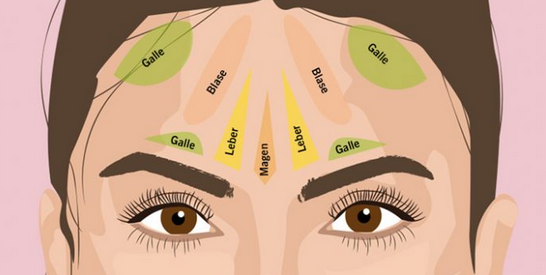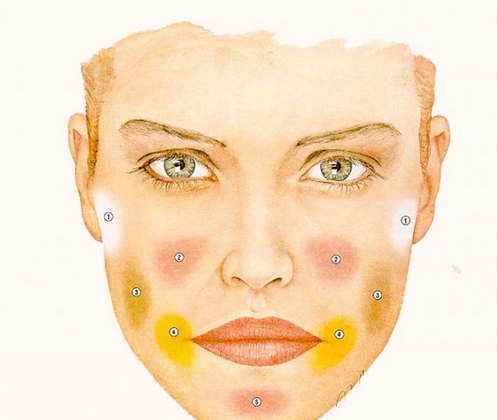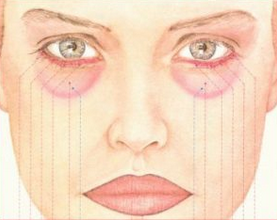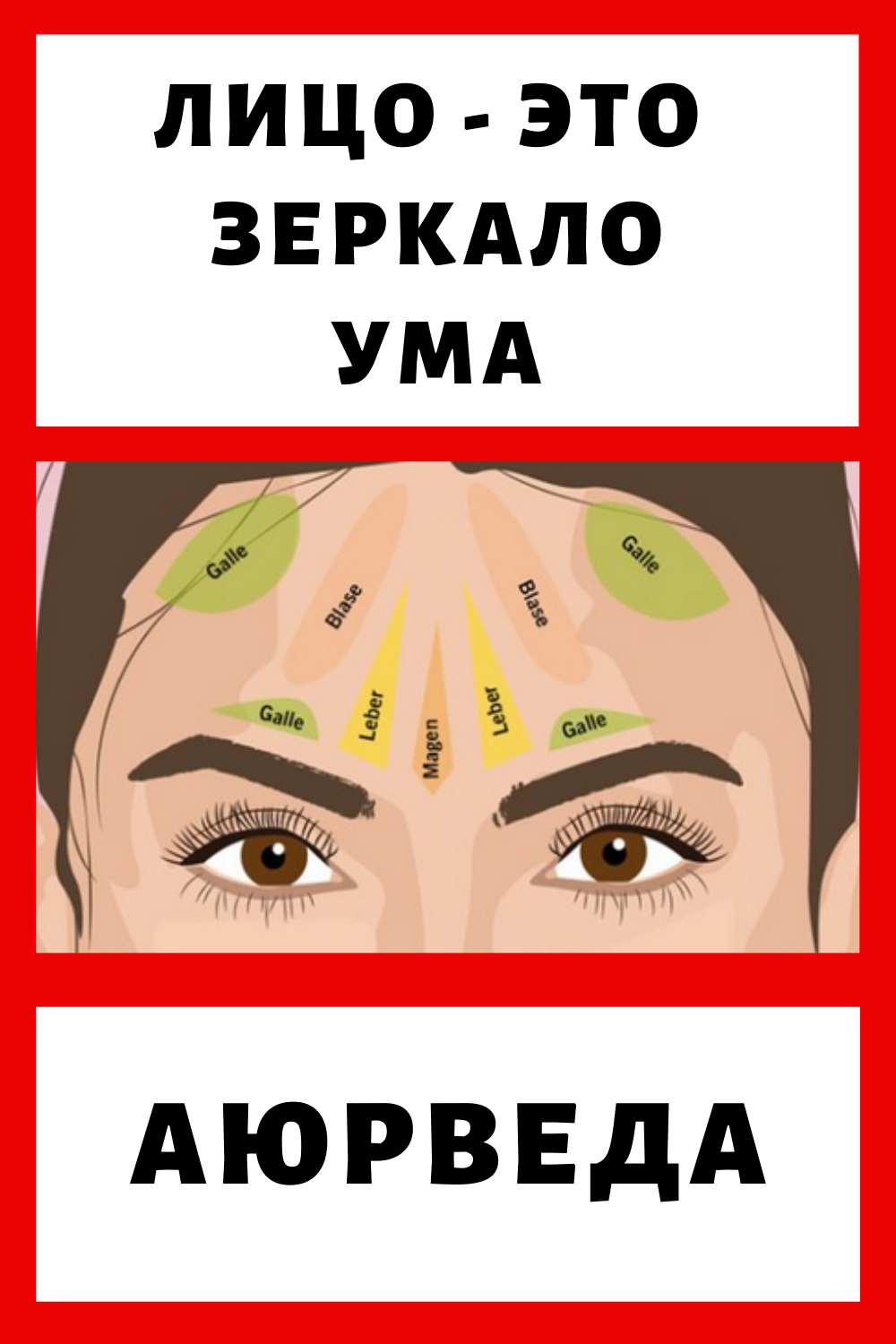Ayurveda teaches very precise methods for detecting a disease process before any appear . By detecting early symptoms of imbalances and disease reactions in the body , the nature of the body's future reactions can be determined.
In the West, the word "diagnosis" usually means the identification of the disease after its manifestation. In Ayurveda , however , diagnosis refers to the constant , step by step , observation of the interaction between order ( health) and disorder ( disease) occurring in the body. The disease process is the interaction between the tissues of the body and its properties. The symptoms of the disease are always associated with an imbalance in the tridosha. Once you understand the nature of this imbalance , you can restore the balance in the tridosha with treatment.
Ayurveda about diagnosis
Daily observation of the pulse , tongue , face , eyes , nails and lips will give the student of Ayurveda subtle indicators which he can find out what pathological processes are taking place in the body , which organs and doshas are damaged and where toxins accumulate. Thus , by regularly checking the indicators , pathological symptoms can be identified in advance and preventive measures can be taken.
Ayurveda teaches that the patient is a living book , and to understand his physical well-being, this book should be read daily.
face diagnostics
The face is the mirror of the mind. There are lines and wrinkles on the face. If there is a violation and illness, it will show your face. Pay close attention to your face in the mirror.
Horizontal wrinkles on the forehead indicate your deeply hidden anxieties and worries.
A vertical line between the eyebrows on the right side indicates that the suppression of your emotions is affecting the liver.
A vertical line between the eyebrows on the left side indicates that your spleen is aroused.
When the lower eyelids are full and swollen , this indicates a violation in the kidneys.
A discoloration ( butterfly-like) of the nose or cheeks also refers to the region of the kidneys and means that the body is not absorbing iron or folic acid and the digestive metabolism is not working properly due to a decrease in agni.
Usually , people of wata constitution cannot gain weight. Therefore, their cheeks are flaccid and sunken. People with a slow metabolism ( kapha constitution) may retain water and fat , and their cheeks will be plump.
The tip of the nose indicates the constitution. A pointed nose indicates Pitta , a flat nose , a blunt nose indicates Kapha , and a hooked nose indicates Vata.
Lip diagnostics
Like other parts of the body ( tongue , nails , face , eyes), lips also reflect the healthy or diseased state of various organs. It is necessary to observe the size , shape , surface , color and outline of the lips.
If the lips are dry and rough, this indicates dehydration or a vata disorder. Nervousness and fear can also be the cause of dry and trembling lips. With anemia, the lips are pale. As a result of chronic smoking, the lips become brownish-black .
Repeated occurrence of inflamed areas on the surface of the lips indicates lichen and chronic pitta disorder.
If there are a lot of light brown spots , this indicates poor digestion or the presence of worms in the colon.
In the case of jaundice , the lips turn yellow , in heart disorders , due to lack of oxygen , the lips turn blue. Unequal coloration of different parts of the lips indicates defects in the corresponding organs.
Nail diagnostics
According to Ayurveda , nails are a by-product of bones. Look at the size , shape , surface and outline of your nails. See also if they are flexible , soft , , or brittle , easily broken.
If the nails are dry , hooked , rough , easily broken , then the body is dominated by cotton wool.
When the nails are soft , pink , tender , easily bendable and slightly shiny , Pitta predominates in the body.
If the nails are thick , strong , soft , highly shiny , with the same contour , then kapha predominates.
Long lines on the nails indicate poor absorption of food in the digestive system. Cross grooves on the nails indicate poor nutrition or advanced diseases.
Sometimes the nails are protruding , convex , bulbous , similar to drumsticks. This condition of the nails , called clubbing, indicates weakness of the heart and lungs.
When the nail is spoon-shaped and concave so that it can hold a drop of water , it indicates an iron deficiency. White spots on the nail indicate a lack of zinc or calcium.
White spots on the nail indicate a lack of zinc or calcium.
Pale nails indicate anemia.
Excessive redness of the nails indicates an excess of red blood cells.
Yellow nails indicate liver weakness or jaundice.
Blue nails indicate a weak heart.
Each finger has a connection with a specific organ:
the thumb is associated with the brain and skull,
the index finger with the lungs,
the middle finger with the small intestine,
the ring finger with the kidneys,
and the little finger with the heart.
White dots on the ring finger indicate calcium deposits in the kidneys. If there are white dots on the index finger , this indicates an accumulation of calcium in the lungs.
Eye diagnostics
Small and often blinking eyes indicate the predominance of Vata in the body. Excessive blinking of the eyes indicates deeply hidden nervousness , anxiety, and fear. A drooping upper eyelid indicates feelings of insecurity , fear , loss of confidence , vata disorder. Large , beautiful , attractive eyes indicate a kapha constitution.
Pitta eyes are shiny and sensitive to light , light in color , and tend to be nearsighted. According to Ayurveda , the eyes get their energy from one of the main elements - fire. The sensitivity of the retina to light is the result of fire energy. Thus people of Pitta constitution have an excess of fire in the body and hypersensitive to light.
If the eyes protrude, this indicates a malfunction of the thyroid gland. If the conjunctiva of the eyes is pale , this indicates anemia. If the conjunctiva is yellow , there is liver weakness.
It is necessary to observe the color , size and shape of the iris. A small iris indicates weakness of the joints. If there is a white circle around the shell , this indicates an excess intake of salt or sugar. In middle age, this can be a sign of stress. If the white ring is very protruding and very white ( especially in middle age), this indicates a degeneration of the joints. They will crack and break , joint pain and arthritis are likely. Brownish-dark dots on the iris indicate indigestion of iron by the intestines.
